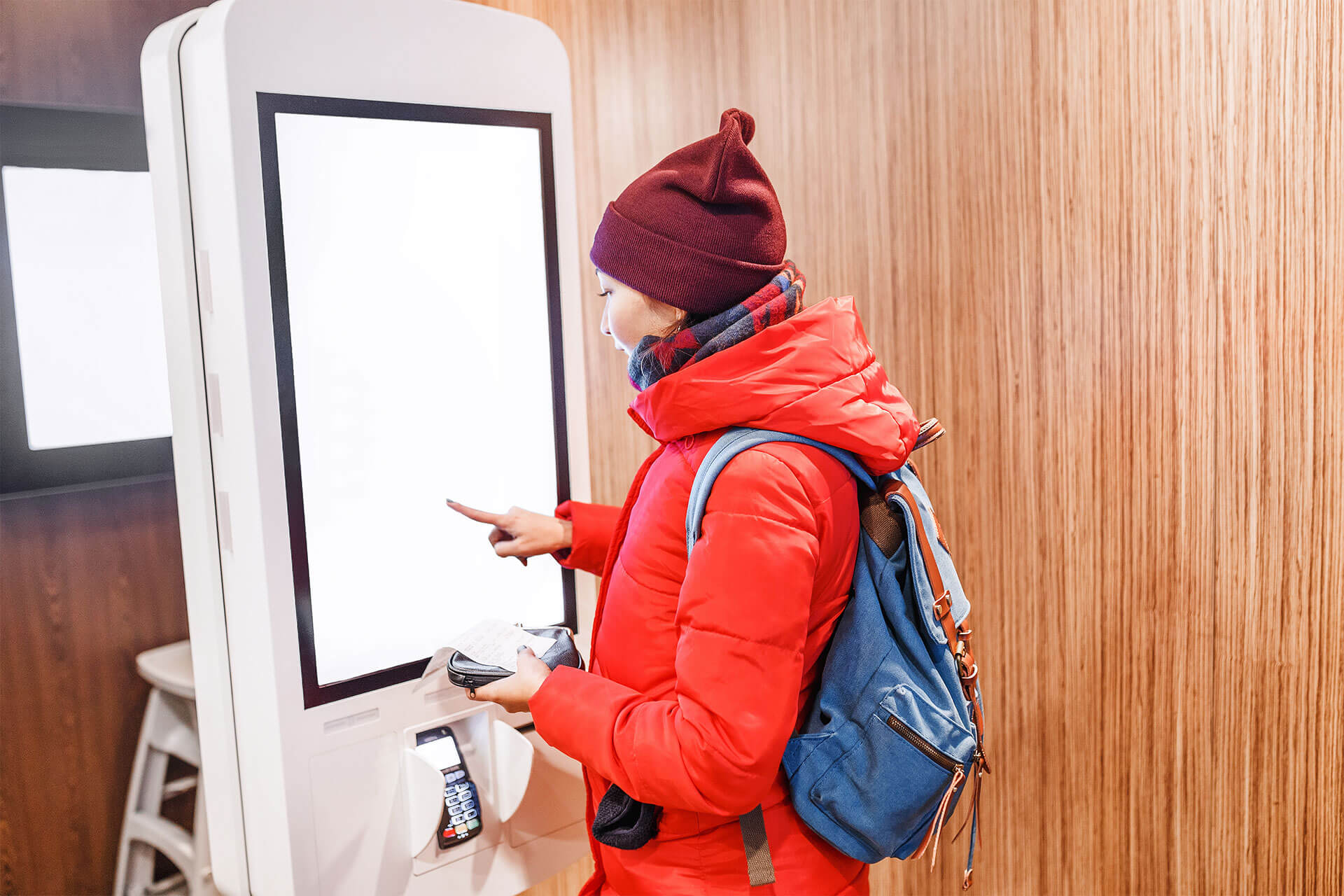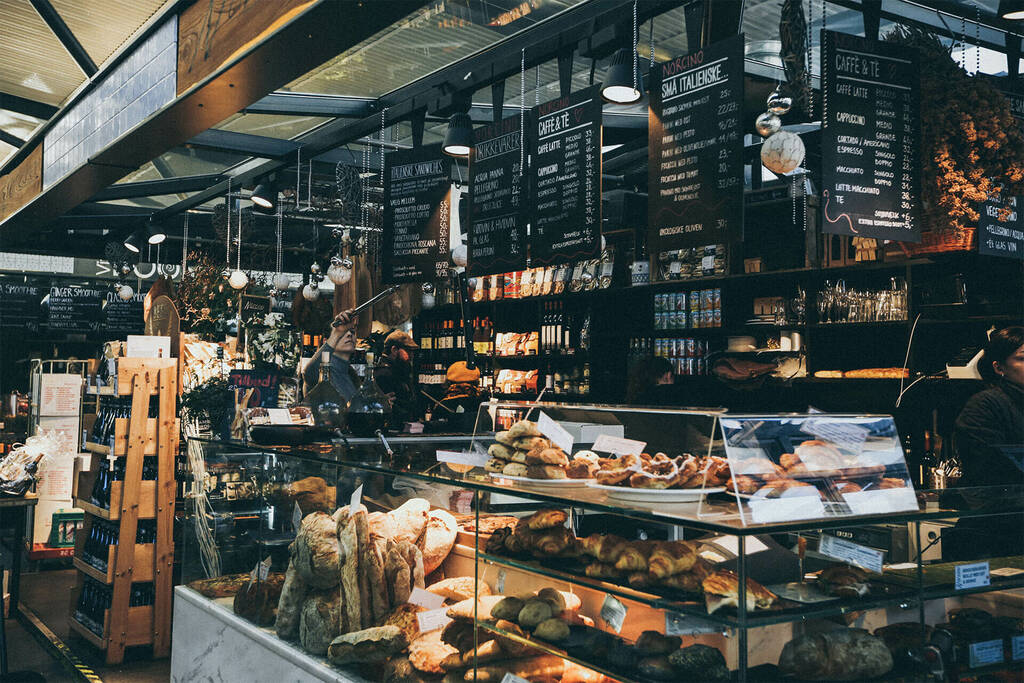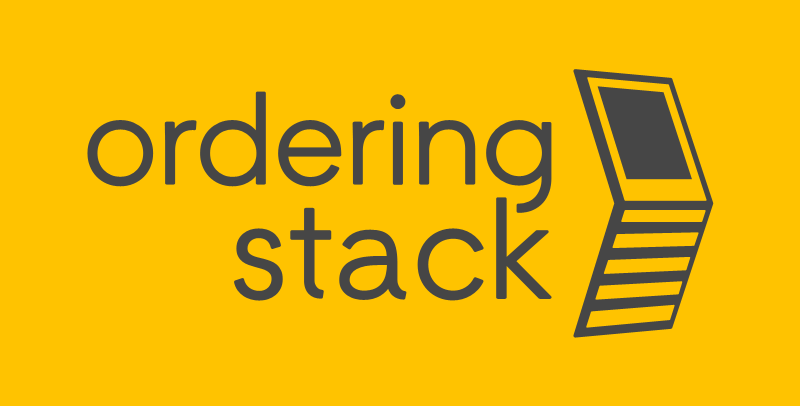Self-Service-Bestellkiosk – eine Lösung für ewige Probleme
Es ist verlockend, den Restaurant- und Fast-Food-Sektor als ein krisensicheres, immergrünes Geschäft zu betrachten – als sicheren Hafen für Investitionen in einer Zeit voller Unsicherheiten. Dieses Geschäft hat sich im Laufe der Zeit als stabil erwiesen, unabhängig vom geografischen Standort.
Trotz seiner Rolle als eines der stärksten Symbole der Globalisierung und des „American Way of Life“ war Fast Food bereits im antiken Rom beliebt. Ein Thermopolium (wörtlich: „ein Ort, an dem heiße Getränke verkauft werden“) war ein kleiner Raum mit einer großen Theke zur Straße hin, an dem fertig zubereitete Mahlzeiten zum Mitnehmen oder zum Verzehr vor Ort angeboten wurden.
Es gab viele Gründe, warum Menschen fertiges Essen kauften. Viele römische Bürger waren nicht wohlhabend genug, um zu Hause zu kochen. Andere wiederum waren einfach zu beschäftigt oder in Eile und mussten unterwegs essen. Kommt Ihnen das bekannt vor?
Die Idee des Fast Foods ist so robust, dass sie den Untergang Roms überstanden, im mittelalterlichen Venedig florierte und sich bis heute gehalten hat – bis sie schließlich zu einem Synonym für den amerikanischen Traum wurde. Und im Grunde hat sie sich kaum verändert. Eine Fleischpastete aus dem London des 14. Jahrhunderts ist gar nicht so weit vom heutigen Big Mac entfernt. Muss sich dieses Geschäft im 21. Jahrhundert also überhaupt verändern? Offenbar tut es das bereits.
Eine Fast-Food-Revolution durch Self-Service-Kioske
The modern fast-food industry faces not only a revolutionary shift in eating habits exemplified mainly by vegan and vegetarian diets. According to The Economist in 2015, only 3-4% of the US adult population declared themselves to be vegetarian and roughly 0.4% were vegan. In 2019 a staggering 25% of Americans aged 25-35 were vegan or vegetarian.
The market itself is transforming, with rising labor costs and declining birth rates. Most chains are built on a vision of low-cost young employees and maintaining the status quo is impossible.
Also, contrary to earlier ages, the 21st century provides new ways to automate and augment human labor using machines and IT solutions. Delivering food in the manner of a Roman fast food outlet would be today considered organic food manufacturing.
That’s why self-service restaurant kiosks are gaining attention. Getting straight to the point – an ordering kiosk is a digital signage device that enables the user to browse the menu, place orders and sometimes includes payment processing. More details about the device and the automated ordering process can be found in our recent text – What is a kiosk (a complete HoReCa guide).

A digital kiosk is not only a device placed inside a restaurant to serve clients. The goal is to incorporate the kiosk as a comprehensive and equal channel in a modern omnichannel mix. Thus, the specialized digital signage hardware needs to be supported by digital kiosk software, be that a cloud-based solution or firmware that is hardcoded into the device.
Fast food kiosk – a modern solution
A modern fast food restaurant faces multiple previously unseen challenges. Yet it has a new ally in new technology when looking for solutions to these problems. It has become apparent that a digital kiosk is the most suitable of these solutions.
Queues
Waiting is, in fact, a waste of time waste. The boredom and the dullness of the process is killing profits in multiple businesses around the world. According to the Washington Post, there are separate philosophies when dealing with queues in fast food outlets, with McDonald’s being an apostle of multiple short lines and Wendy’s exploiting a single, serpentine queue.
Regardless of such choices, a digital kiosk is ever-vigilant and ready to process the orders. The machine not only reduces queues by delivering a self-ordering kiosk. It enables the workforce to switch to other tasks like preparing meals. When each meal is prepared faster, the queue itself moves faster.
Workforce management
As previously mentioned, the increasing challenges with regards to the workforce combined with queue growth are becoming increasingly painful for the industry. A digital kiosk is a handy tool for the comprehensive presentation of offers – the customer can browse the menu, read the descriptions, customise their meal and pay for it – a set of tasks that usually requires an assistant.
Given that the kiosk performs certain duties, employees don’t need to – allowing them to prepare meals during the rush hours. When footfall is not that severe, they can perform cleaning duties in the restaurant. According to the M/A/R/C Research and National In-Store study quoted by QSR magazine, 14% of people would stop visiting a store if it was not clean enough.
Also, 29% said that when seeing a dirty store, they would only continue shopping only when necessary. When it comes to a quick-service restaurant, it is easy to overlook some leftovers, a spot of mustard on a table or spilled coke, that becomes sticky over time. Keeping the restaurant shiny is easier when there are enough people to serve customers.
Last but not least – the support provided by kiosk reduces pressure on the staff. Being served by a more relaxed employee who smiles more often is priceless for a customer experience strategy.
Product exposition
According to a recent study published in “Ophthalmology” (and quoted by Raconteur), by 2050 nearly 50% of humanity, a staggering five billion people, will suffer from short-sightedness (myopia). This problem is common today and displaying menu items on the board over the countertop can be frustrating for people who can’t see it properly or just feel that they do not have enough time to read it.

A digital kiosk provides large images and legible descriptions of the meals right in front of the customer. They can browse the offers for as long as they need and adjust the size of images and text to suit their needs.
Product personalization
Last but not least, when provided with precise descriptions and clear offers, a customer can easily compose the meal they needs. Also, there is no risk of being judged for the choices made. Visiting fast food to eat all-vegan? Why not. Ordering a tonne of sugar? The self-service food kiosk doesn’t judge.
The kiosk allows for multiple ways of customising an order – a simple “do you want fries with that?” is not enough when building some more sophisticated meals. It is also a form of pressure, especially when one doesn’t want fries, but is interested in other options.
A kiosk supports all these fancy up- and cross-selling options.
Summary
A key component of “fast food” is “fast”. That’s what makes the difference when compared to other forms of serving meals and it clearly defines the need that is being fulfilled. In the age of advanced technology that is transforming all businesses, the only way to remain “fast” is to adapt.
Otherwise, a once fast business will fall behind.





